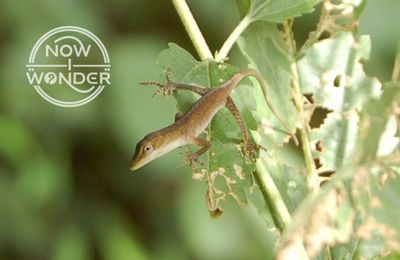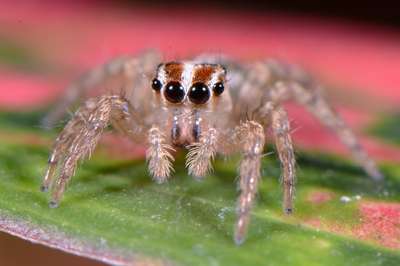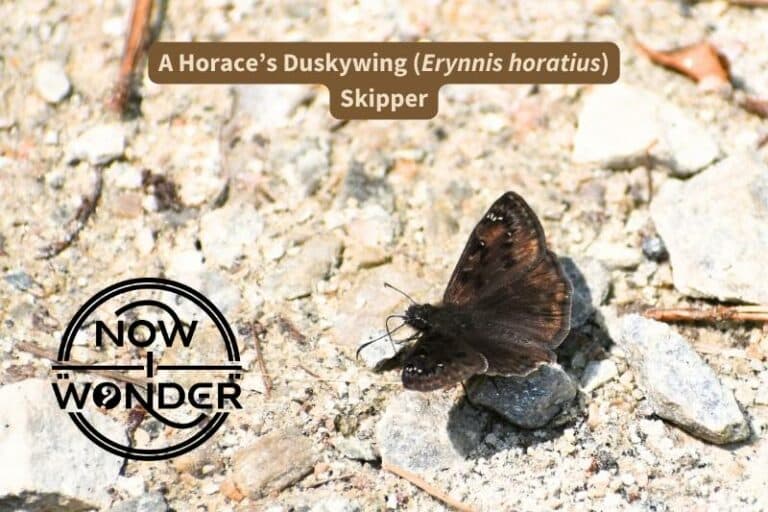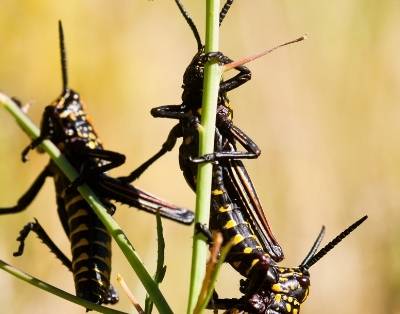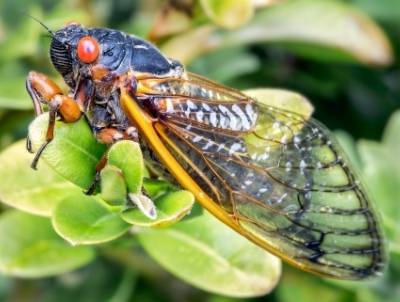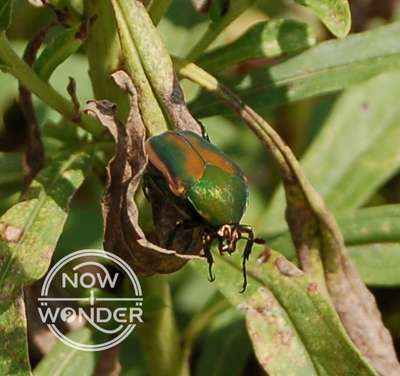Red-spotted Purple butterflies are large butterflies with black and iridescent purple wings. Their wings look similar to those of a related butterfly species, which is toxic to vertebrate predators. Red-spotted Purple butterflies gain protection from attack by mimicking their more dangerous cousin.
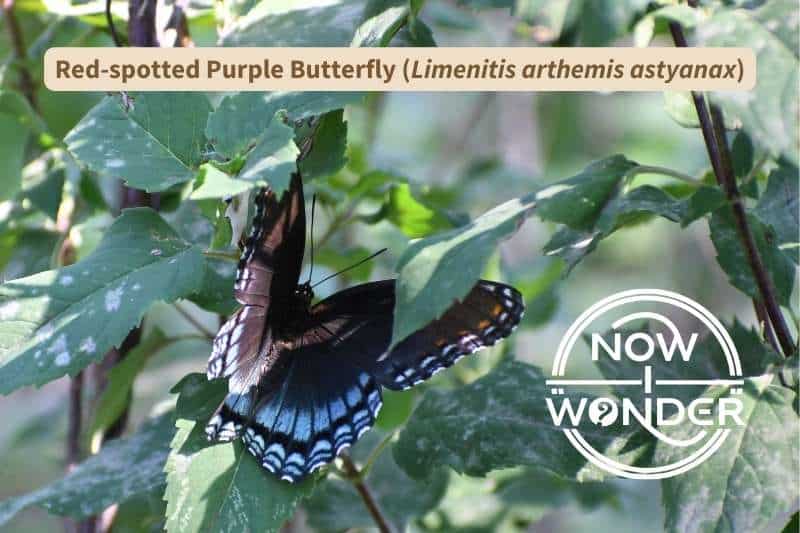
It was one of the hottest days of one of the hottest North Carolina summers on record. I was tromping around outside, searching for creatures, and sweating absolute buckets.
The temperature was in the high 90’s F. The air was heavy with humidity. Few creatures were out and about, as most were sheltering from the ridiculous heat.
But amateur nature bloggers are made from pretty stern stuff. And this was my last chance to spend extended time outdoors before the work week started again. I wasn’t going to waste the opportunity.
I had been out for about an hour with not much to show for my efforts. I was feeling pretty sorry for myself when I caught sight of a dark shape fluttering along the edge of some trees. I moved closer to get a better look, and all thoughts of retreating to a dark, air conditioned building fled from my mind.
I was staring straight at the most beautiful butterfly I’d ever seen- a Red-spotted Purple (Limenitis arthemis astyanax).
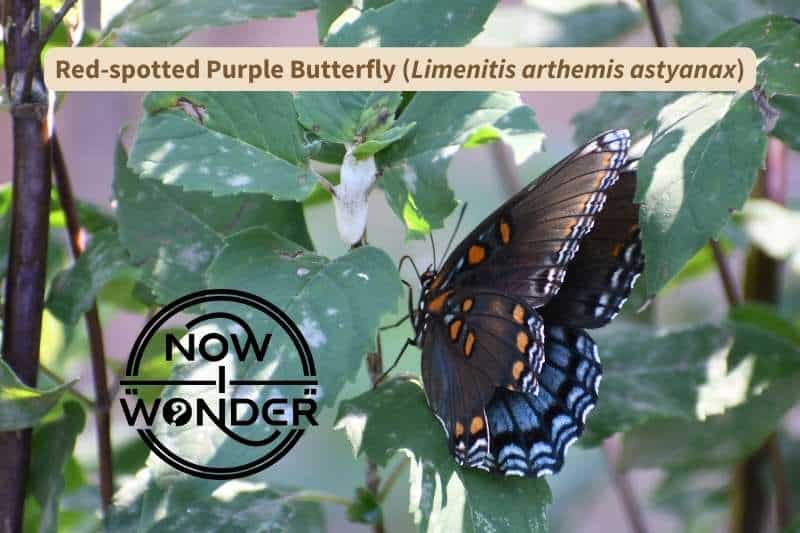
The Red-spotted Purple butterfly (Limenitis arthemis astyanax) is common throughout North Carolina. They have vivid purplish-blue wings that span 4 inches (101 mm). Red-spotted Purples prefer rotting fruit, dung, and tree sap over flower nectar, and live in open woodlands and along forest edges.
Fun Facts About Red-spotted Purple Butterflies To Wow Your Friends
- Red-spotted Purple butterflies are not poisonous to predators. However, another North Carolina butterfly species, the Pipevine Swallowtail (Battus philenor) is toxic. Red-spotted Purples look a lot like Pipevine Swallowtails.
- Pipevine Swallowtails are so toxic to vertebrate predators that most avoid attacking them. Looking like a poisonous Pipevine protect Red-spotted Purples by association.
- Many harmless and completely edible creatures in nature mimic their more dangerous cousins. This evolved defense is referred to as “Batesian mimicry”.
- You can tell the difference between a Red-spotted Purple butterfly and a Pipevine Swallowtail butterfly in two ways.
- First, the hindwings of Red-spotted Purple butterflies lack “tails”.
- Second, the underside of Red-spotted Purple butterflies’ wings have bright red-orange spots near their bodies.
- Red-spotted Purple butterflies are closely related to another butterfly species called the White Admiral.
- The relationship is so close that some scientists consider these two butterflies variations of the same species (Bartlett Wright, 1993).
- Others grant White Admiral butterflies their own scientific name, Basilarchia arthemis (Pyle, 1981).
- Others consider these two butterflies sub-species of the Genus species Limenitis arthemis and give the White Admiral the scientific name Limenitis arthemis arthemis (Heinrich, 2020).
- These butterflies differ in both distribution and appearance.
- White Admirals are found in the northern part of the United States. Red-spotted Purples are found in the southern states, like North Carolina, as they prefer warmer temperatures and lower elevations.
- Red-spotted Purple butterflies have more blue on the top of their wings than White Admirals. They also lack the wide white bands that White Admirals have on both the top and bottom surfaces of their wings.
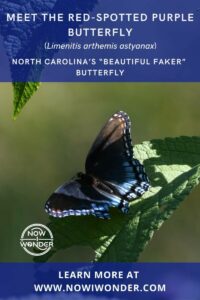
How Are Red-spotted Purple Butterflies Classified?
| Kingdom | Animalia |
| Phylum | Arthropoda |
| Class | Insecta |
| Order | Lepidoptera |
| Family | Nymphalidae (“brushfoots”) (subfamily Limenitidinae “admirals and relatives”) |
| Genus species | Limenitis arthemis astyanax |
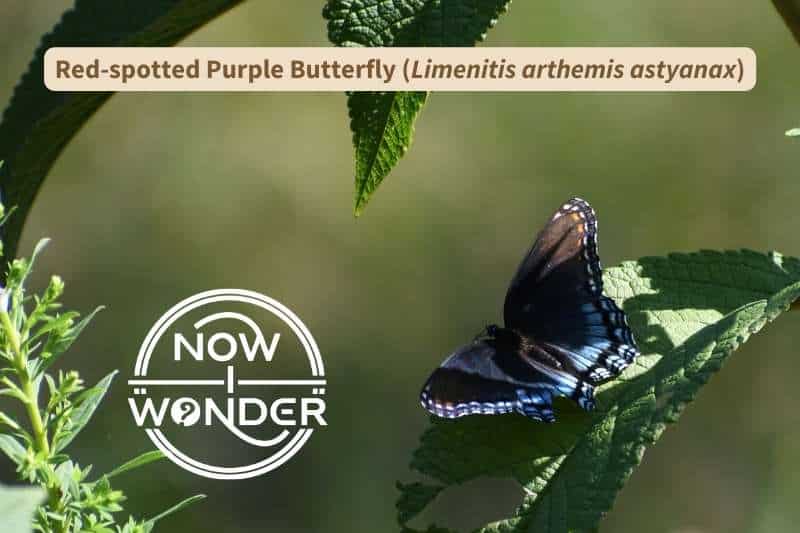
Red-spotted Purple butterflies belong to the “brush-foot butterfly” family Nymphalidae. This family contains more species worldwide than any other butterfly family. Around 160 of the approximately 3000 species live in, or visit, North America (Pyle, 2020).
Butterflies classified in this family have very small front legs. This makes them appear to have only four legs at first glance, rather than the six legs expected of insects. Their reduced front legs look like little brushes (thus the family name) and aren’t used for walking.
How Do I Know I’m Looking at a Red-spotted Purple Butterfly?
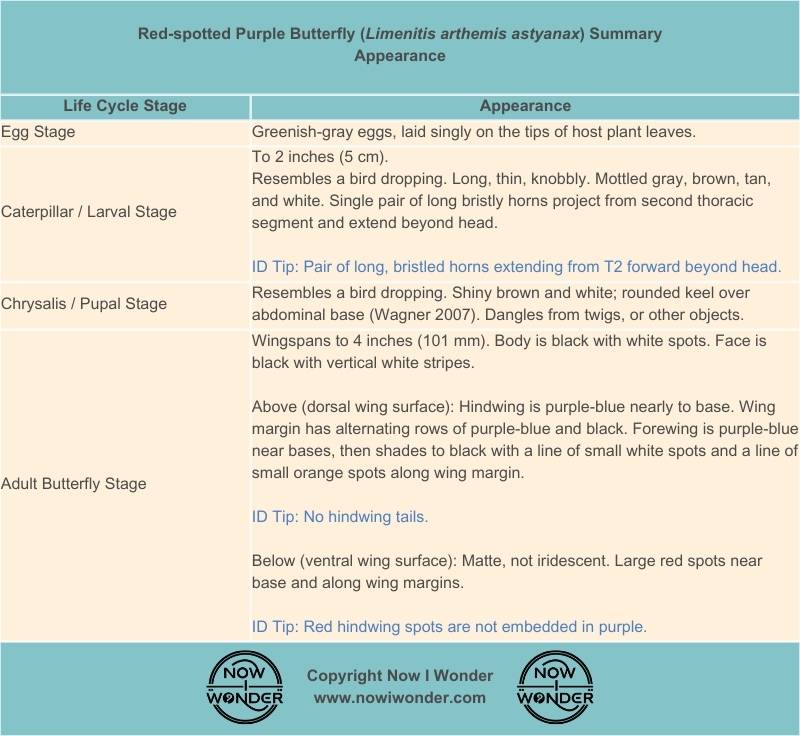
Appearance of Red-spotted Purple Butterfly Eggs
Female Red-spotted Purple butterflies lay greenish-gray eggs one at a time. They position each egg on the tips of carefully selected host plant leaves (Daniels, 2003).
Appearance of Red-spotted Purple Butterfly Caterpillars / Larvae
Red-spotted Purple caterpillars resemble bird droppings. Their bodies are long, thin, and knobbly and are mottled gray, brown, tan, and white. They have a pair of long, bristly-looking horns on their thoraxes (the segment right behind their heads).
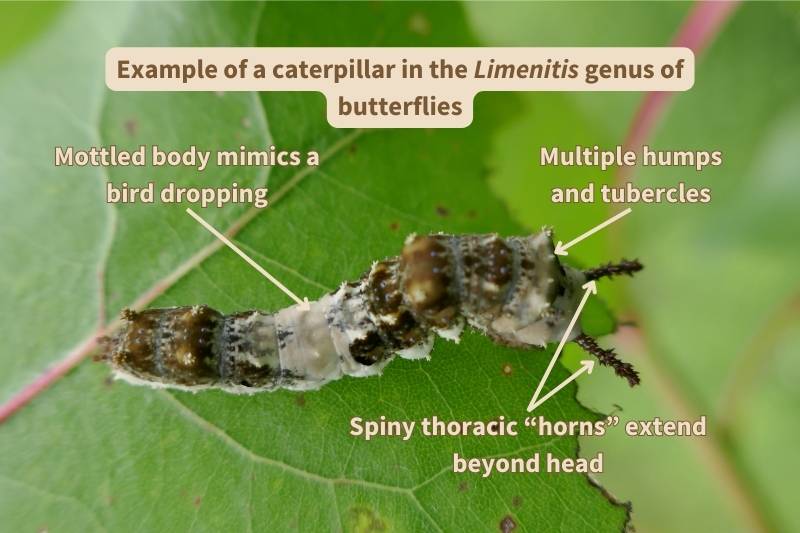
The pupal chrysalids are also camouflaged as bird droppings. This mimicry protects the larvae and pupae from predators (Bartlett Wright, 1993). The chrysalids are shiny brown and white and dangle from twigs or other objects (Wagner 2007).
Appearance of Adult Red-spotted Purple Butterflies
Red-spotted Purples are large butterflies. Adults grow to 3.0 – 4.0 inches (76 – 101 mm) wingspans. Both sexes look similar.
Their legs, antennae, and mouthparts are velvety black. Their bodies are also black, and are decorated with a scattering of bright white spots. Their black faces have white stripes running from top to bottom. Like all butterflies classified within the brush-foot butterfly family Nymphalidae, they appear to have only four legs.
Butterfly wings are covered with thousands of tiny scales. These scales reflect light at different angles and wavelengths. This means that some butterflies appear to change color in different light. The Red-spotted Purple butterfly is one of the most striking examples of this.
Red-spotted Purple butterflies sometimes look a little bland. They are anything but. Their wings look dull brownish-black only until sunlight hits them at just the right angle. Then the top surface of their wings flare with the most beautiful deep bluish-purple iridescence. The change is mesmerizing.
Their hind wings reflect this beautiful color nearly to their bases. Several rows of purplish-blue and velvety black alternate along their wing margins. Their forewings also appear bright blue near the bases. But their forewings also include a line of white spots along the outer margin and one line of bright orange spot.
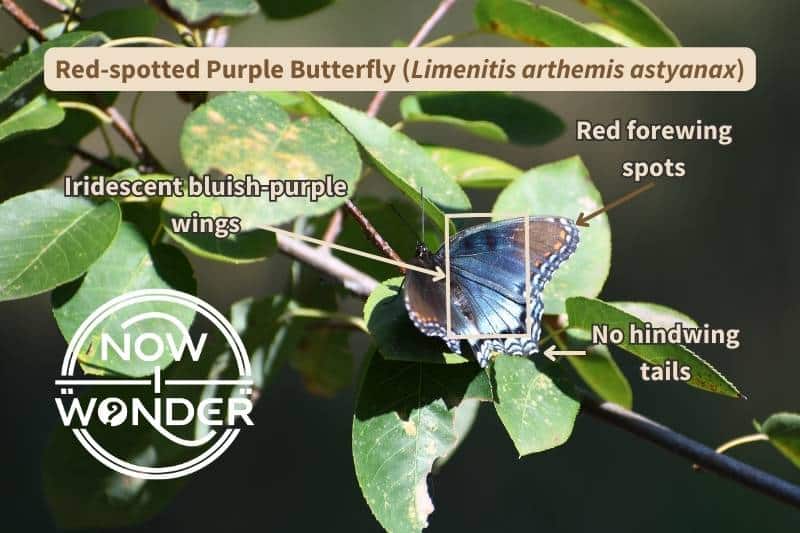
The bottom wing surface is more dull, without the iridescent sheen seen on the dorsal wing scales. Bright reddish spots decorate the under wing surface, giving Red-spotted Purple butterflies the other half of their common name. Unlike other butterfly species whose underwings look similar, the red spots on Red-spotted Purples are not embedded in purple.
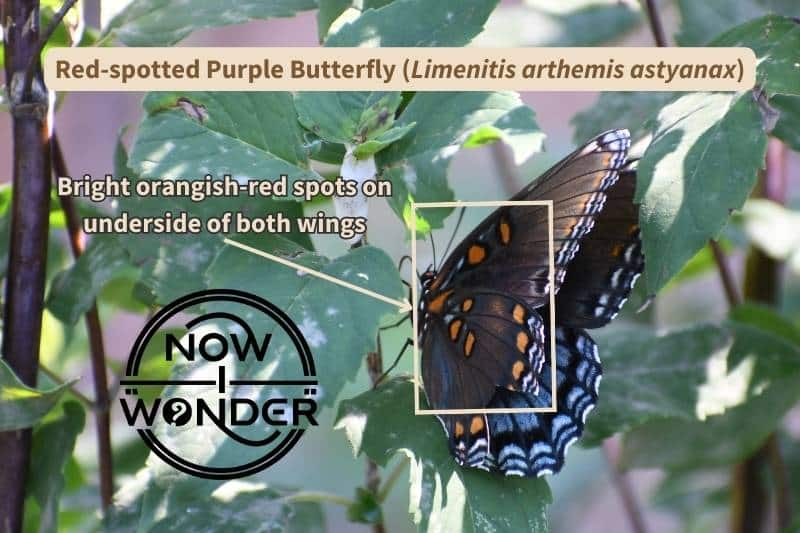
When Can I Find Red-spotted Purple Butterflies in North Carolina?
Red-spotted Purples can be found in North Carolina from the end of April to end of October. They hatch and develop into multiple generations per season (Daniels, 2003).
Most of the time, individuals overwinter in their chrysalids. In the spring, they emerge and become the first adults to mate. But during warmer winters, some individuals may survive as caterpillars.
Where Should I Look to Find Red-spotted Purple Butterflies in North Carolina?
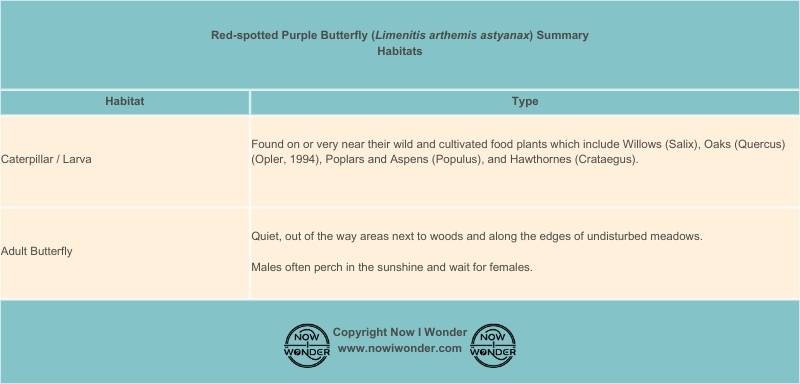
Red-spotted Purple butterflies are found across North Carolina. They are easy to spot because of their large size but are fairly uncommon. Look for them in quiet, out of the way areas next to woods and along the edges of undisturbed meadows.
Males often perch in the sunshine and wait for females. They fly with quick, fluttering wing beats alternated with long, flat-winged glides.
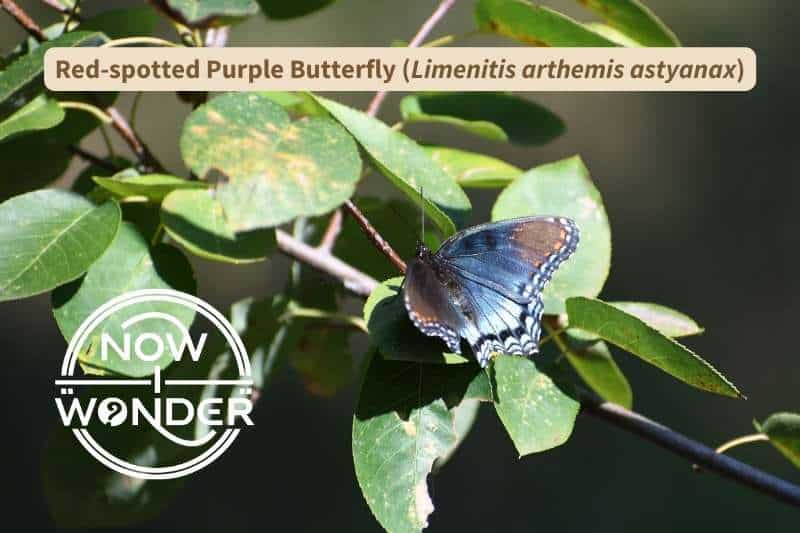
What Do Red-spotted Purple Butterflies Eat?
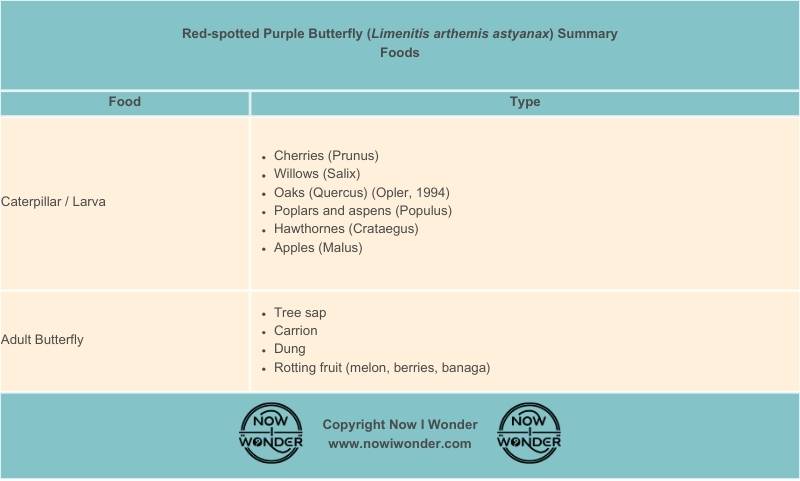
Red-spotted Purple Butterfly Larval Food Plants:
- Cherries (Prunus)
- Willows (Salix)
- Oaks (Quercus) (Opler, 1994)
- Poplars and aspens (Populus)
- Hawthornes (Crataegus)
- Apples (Malus)
Red-spotted Purple caterpillars have an odd feeding habit. They eat only the veins of their host plant’s leaves rather than the entire leaves. They feed from the tip of the leaf and follow the vein about halfway down the leaf, then rest on the end of the vein (Daniels, 2003).
Adult Red-spotted Purple Butterfly Food
Adult Red-spotted Purple butterflies will sometimes visit flowers. But they really prefer to feed on tree sap, carrion, and dung.
They are also partial to rotting fruit (Daniels, 2003). You can entice them to visit your backyard by setting out plates of over-ripe melon, berries, or banana.
References
Bartlett Wright, Amy. 1993. Peterson First Guides: Caterpillars. Boston, MA: Houghton Mifflin Company.
Daniels, Jaret C. 2003. Butterflies of the Carolinas. Cambridge, MN: Adventure Publications, Inc.
Glassberg, Jeffrey. 1999. Butterflies Through Binoculars: The East: A Field Guide to the Butterflies of Eastern North America. New York, NY. Oxford University Press.
Heinrich, Bernd. 2020. “Species Ambiguity.” Natural History, 02, 9-11.
Opler, Paul A. 1994. Peterson First Guide to Butterflies and Moths. Boston, MA: Houghton Mifflin Company.
Pyle, Robert Michael. 2020. National Audubon Society Field Guide to Butterflies: North America. New York, NY. Alfred A. Knopf.
Wagner, David L., 2005. Princeton Field Guides: Caterpillars of Eastern North America. Princeton, NJ: Princeton University Press.

